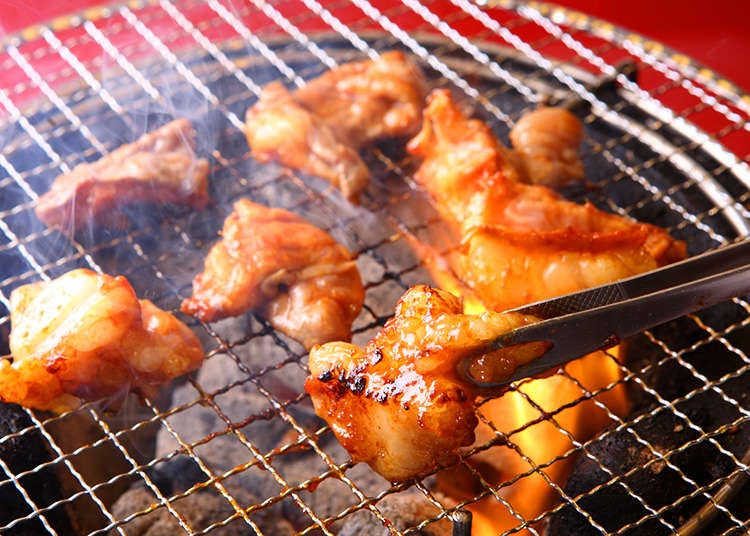
In Japan, the term “horumon” refers to the edible offal of livestock such as cows or pigs. Often boiled or grilled, a lot of restaurants feature these kind of offal dishes, either called “horumon” or “motsu”.
The History of Horumon
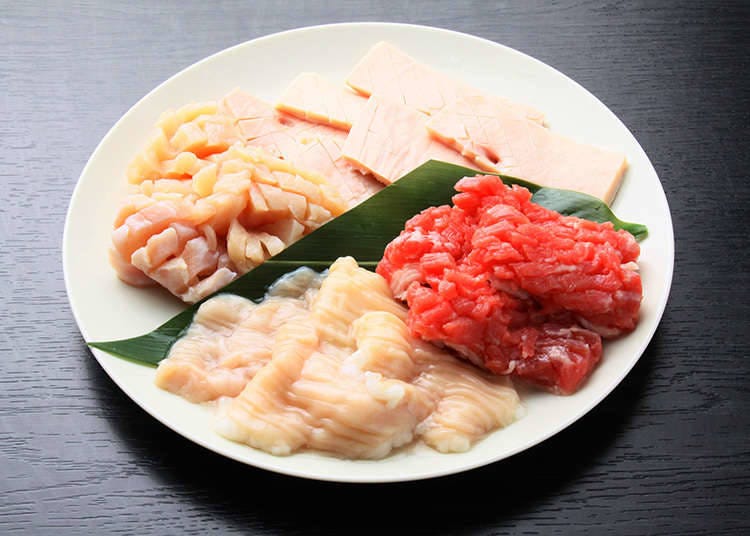
Making use of offal as part of Japanese cooking has been first recorded around the 7th century. Some theories say that the Japanese term “horumon” derives from the German term for hormone, “Hormon”, which is very similar in pronunciation. Around the 1920, offal cuisine was turned into a standalone type of cuisine, known for being rich in nutrients and having an energizing effect. In times when meat was scarce, people often ate offal to prevent malnutrition.
Eating Horumon
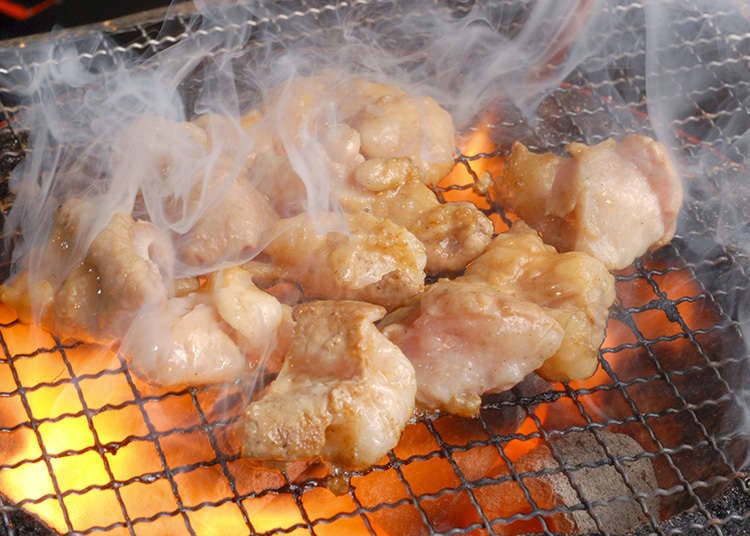
The most delicious way to enjoy offal cuisine is said to be simple barbecuing. When being marinated before put on the grill, horumon can be enjoyed just by itself after being grilled thoroughly. When grilled without prior seasoning, adding salt, pepper, and lemon before dipping it into sauce is just as delicious.
Another way to enjoy offal is the so-called “motsu nabe”, or offal hot pot, from Fukuoka prefecture, in which the meat is stewed with vegetable and tofu. Many people love the soft, juicy texture of horumon – and just like with any food, the fresher it is, the better it tastes!
The Distinctive Taste of Horumon
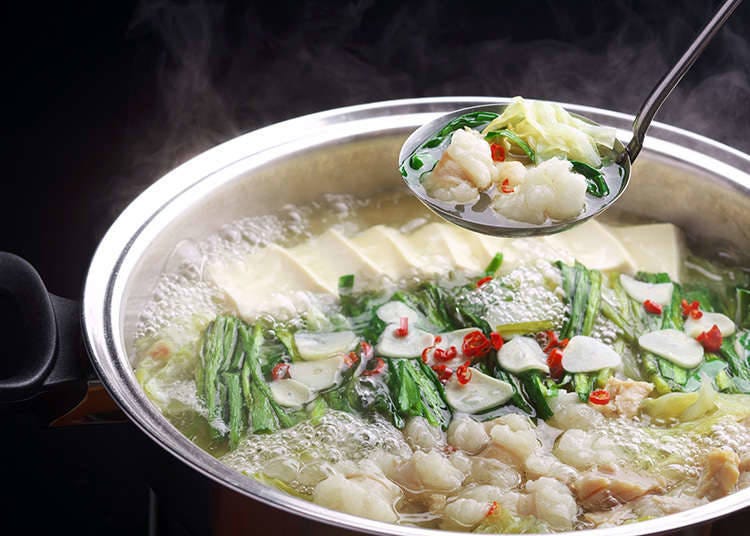
Depending on the type of offal, both the taste and the texture can vary greatly. The colon part, for example, is soft and juicy, while the stomach is pleasantly firm to the bite. Liver, on the other hand, is very soft and incredibly rich in flavor.
Where to Eat Horumon?
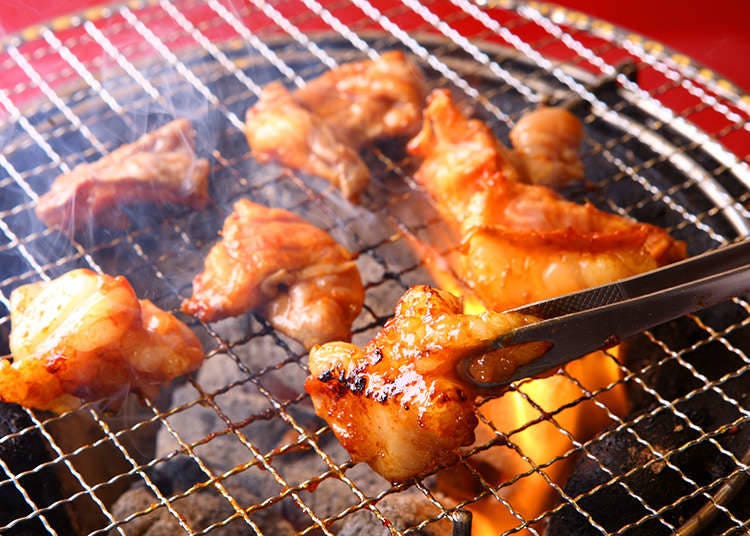
Horumon can be enjoyed in yakiniku (barbecue) restaurants and certain specialty stores. Compared to other kind of meat, it is relatively inexpensive and thus, a delicious and popular treat to be had for about 2,000 to 3,000 yen per person. Offal also goes extremely well with all kinds of drinks which is why it is a popular menu item at Japanese taverns, be it stewed, fried, or grilled.
*Prices and options mentioned are subject to change.
*Unless stated otherwise, all prices include tax.
Recommended places for you
-
Appealing

Rukku and Uohei
Izakaya
Sapporo / Chitose
-

ISHIDAYA Hanare
Yakiniku
Kobe, Sannomiya, Kitano
-

Jukuseiniku-to Namamottsuarera Nikubaru Italian Nikutaria Sannomiya
Izakaya
Kobe, Sannomiya, Kitano
-

Kanzenkoshitsuyakinikutabehodai Gyugyu Paradise Sannomiya
Yakiniku
Kobe, Sannomiya, Kitano
-

Kambei Sannomiyahonten
Yakiniku
Kobe, Sannomiya, Kitano
-
Goods
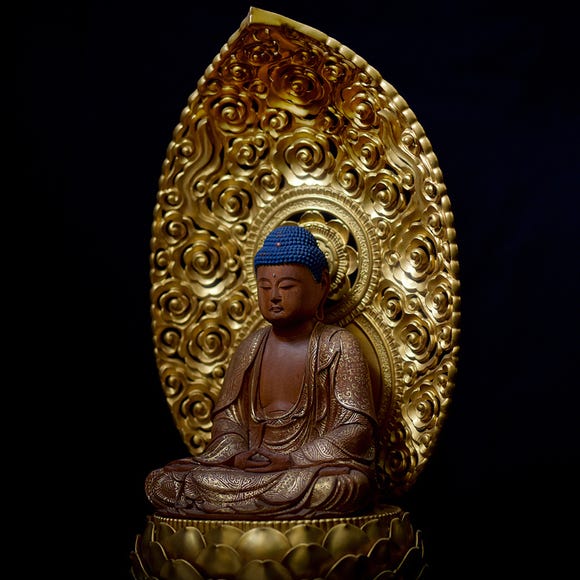
Yoshida Gennojo-Roho Kyoto Buddhist Altars
Gift Shops
Nijo Castle, Kyoto Imperial Palace
-

There’s a new museum in Japan, but almost all of its location is a secret
-

Discover Japan Duty Free GINZA: A Unique Shopping Experience in the Heart of Tokyo
by: Chehui Peh
-

'They Do What in the Toilet?!' Italians Shocked By These Japanese Beauty Quirks
by: Yuu Sato
-

Japan Summer Sales 2025: Your Ultimate Guide to Shopping Deals In Tokyo, Kansai & More!
-

Step Into the World of Chiikawa: Immersive 'Chiikawa Park' to Open in Ikebukuro's Sunshine City This July!
-

A Don Quijote Like No Other: Step Inside the All-New Tourist-Friendly Store at Shinjuku Tonanguchi Bekkan (Open June 13)
by: Chehui Peh
-

Iizaka Onsen Guide: Japan's Gorgeous Hidden Hot Springs Town! (Access, Things to Do, Ryokan)
-

Visiting the Sacred Japanese Gardens at Entsuin Temple in Matsushima
-

Where to Stay in Noboribetsu: 6 Ryokan Hotels in Hokkaido's Spa Wonderland
-

Koiwai Farm Guide: Explore, Dine, and Play at Iwate's Top Agritourism Spot
-

Kaminoyama Onsen Guide: Best Things to Do in Japan's Samurai Town!
-

Visiting Hokkaido Japan: 14 Things to Know Before Traveling to Japan's Wild North
- #best sushi japan
- #what to do in odaiba
- #what to bring to japan
- #new years in tokyo
- #best ramen japan
- #what to buy in ameyoko
- #japanese nail trends
- #things to do japan
- #onsen tattoo friendly tokyo
- #daiso
- #best coffee japan
- #best japanese soft drinks
- #best yakiniku japan
- #japanese fashion culture
- #japanese convenience store snacks













